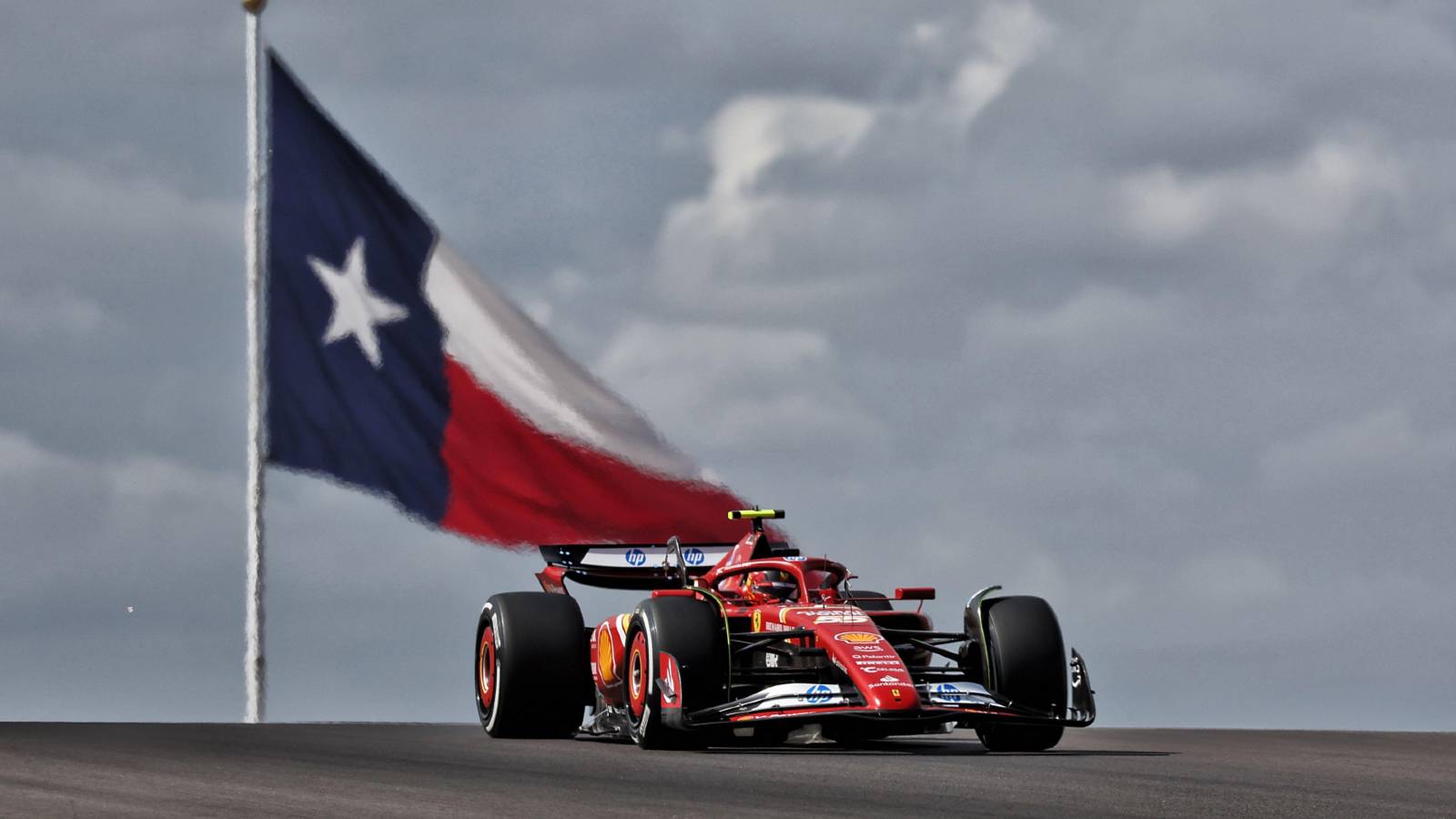
2025 United States Grand Prix: all you need to know
The United States Grand Prix at Austin's Circuit of The Americas (COTA) has become a highlight of the Formula 1 calendar. After returning F1 to American soil in 2012, the Austin race quickly gained fame for its festive atmosphere and challenging track design. Drivers and fans alike praise COTA -- it's an anti-clockwise circuit inspired by legendary F1 corners, yet Turn 1 (nicknamed "Big Red") is an American original. This uphill hairpin, combined with COTA's fast "esses" and big braking zones, delivers thrilling racing year after year. The event's popularity has skyrocketed in recent seasons, even setting an F1 attendance record of around 440,000 spectators over the 2022 race weekend. In short, the 2025 United States GP promises world-class racing and a Texas-sized fan experience at a crucial late-season stop in the championship fight.
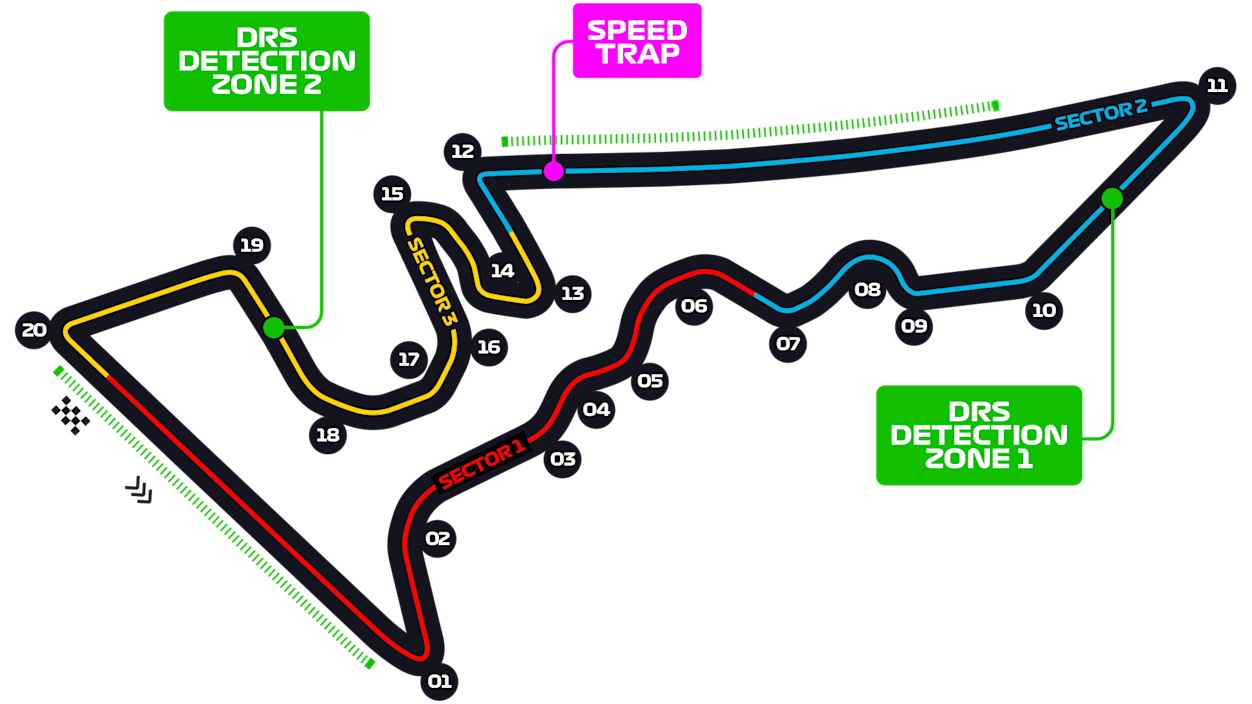
Key corners
Austin's 5.5 km, 20-turn circuit is renowned for several iconic and challenging corners that define a lap at COTA:
- Turn 1 (Big Red) -- COTA's signature corner and first braking point. Drivers charge uphill on a 30 m (100+ ft) elevation rise into a tight left-hand hairpin. The entry is wide and completely blind, allowing multiple lines into the apex. The steep uphill braking zone actually encourages late braking overtakes, making Turn 1 a prime spot for bold moves. It's especially chaotic on the opening lap when cars fan out across the wide track.
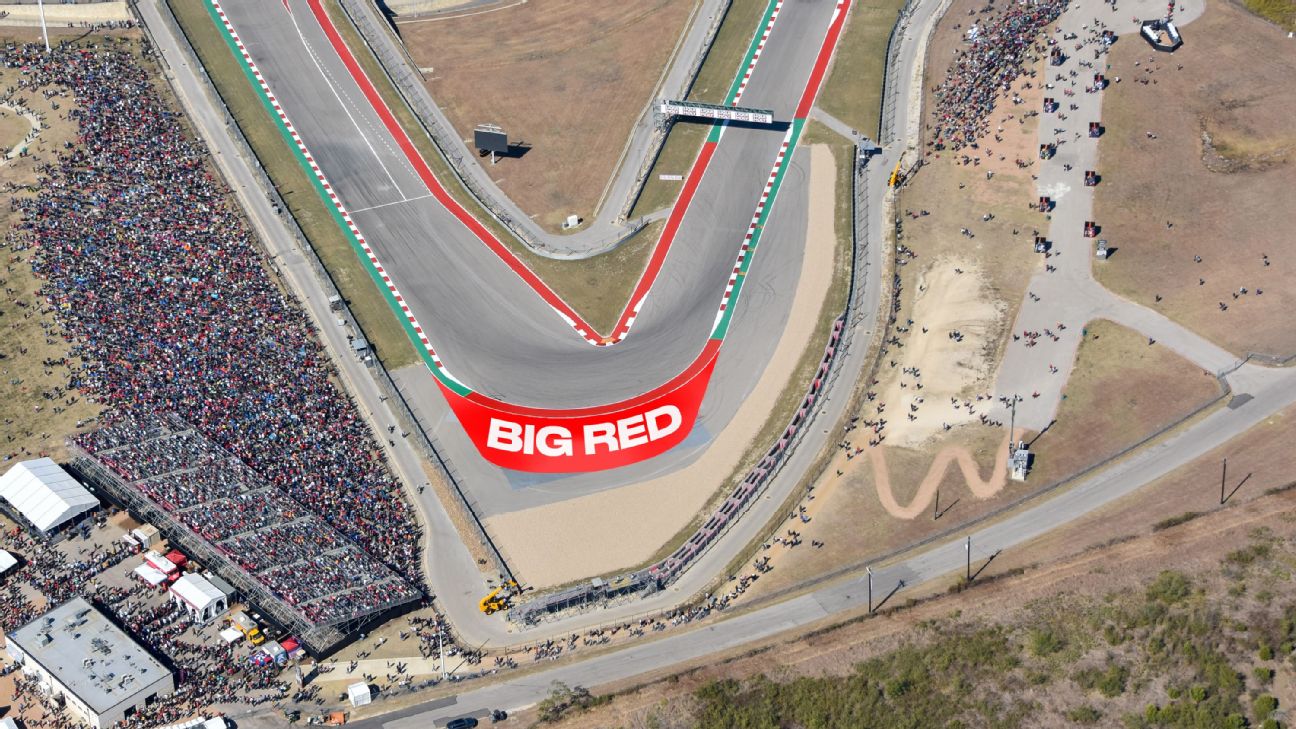
- "The Esses" (Turns 3--6) -- A high-speed S-curves section inspired by Silverstone's famous Maggotts--Becketts complex. After sweeping downhill through Turn 2, drivers flick left-right-left in rapid succession through Turns 3-4-5, then a quicker right at Turn 6. These fast sweepers demand precise rhythm and downforce; the sequence tightens through Turns 7--9, forcing downshifts and commitment through a blind Turn 10. It's a thrilling ride for drivers and spectators, though overtaking here is rare due to the high speeds.
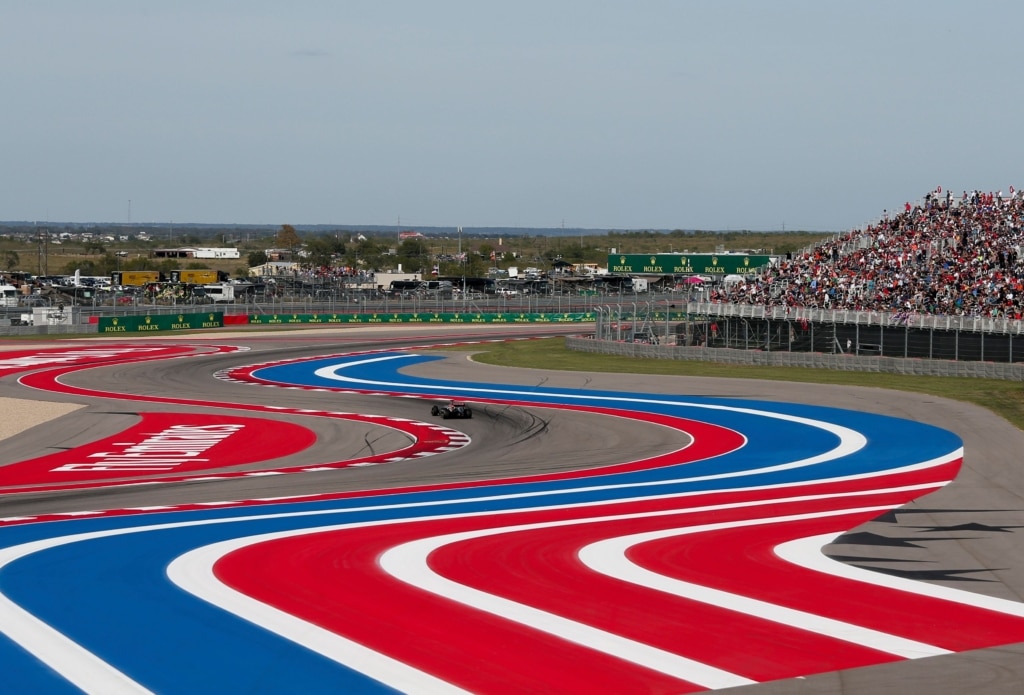
-
Turn 11 (Hairpin) -- At the end of the Esses, the track drops into a tight hairpin left. Turn 11 is a second-gear corner where cars slow dramatically, making it critical to nail the exit. That's because Turn 11 leads onto COTA's longest straight (1.0 km) back toward the pits. A good exit out of Turn 11 can set up an overtaking chance down the straight, so traction and avoiding wheelspin here are key.
-
Turn 12 (Back Straight Braking Zone) -- The straight from Turn 11 ends in a heavy braking zone at Turn 12, a tight left-hander. This is one of the best overtaking opportunities on the circuit. With DRS (Drag Reduction System) on the back straight, cars often reach top speed and then dive inside under braking into Turn 12 to complete a pass . It's a classic slow corner following a long draft, so expect plenty of action here -- in fact, Turn 12 grandstands treat fans to many of the race's scraps for position as drivers often out-brake rivals into this corner.
-
Turn 19 -- The penultimate corner is a fast, flowing left-hander that tests the limits of grip. Drivers approach Turn 19 at high speed and just lift or dab the brakes, carrying as much momentum as possible. It's a "really nice" sweeping corner according to former driver Jolyon Palmer. However, it comes with a caveat -- track limits. Turn 19 has limited run-off, and it's very easy to run wide over the exit kerb in pursuit of lap time. Race control keeps a close eye here; a lap can be invalidated (or penalties earned in the race) if a driver puts all four wheels over the line. Keeping it clean through Turn 19 while pushing to the edge is a challenge that could make the difference in qualifying laps and during the Grand Prix.

Overtaking opportunities
Despite its mix of technical sections, COTA offers plenty of overtaking zones, making for exciting wheel-to-wheel racing. The two most notable passing spots are:
- Turn 1 -- The uphill nature of this first corner aids overtaking. The incline allows drivers to brake later than usual without locking up , so we often see bold dive-bombs into Turn 1. The wide entry means multiple cars can go side-by-side, especially at the start. Even beyond lap 1, Turn 1 is a favorite place to attack -- drivers can utilize a slipstream down the pit straight (with DRS assistance on that straight in F1's Sprint race format) and then out-brake a competitor into the hairpin. It's not uncommon to see crossover moves here as well, where a driver who is passed tries to repass on exit using a better line. In short, Turn 1 consistently delivers drama in Austin.
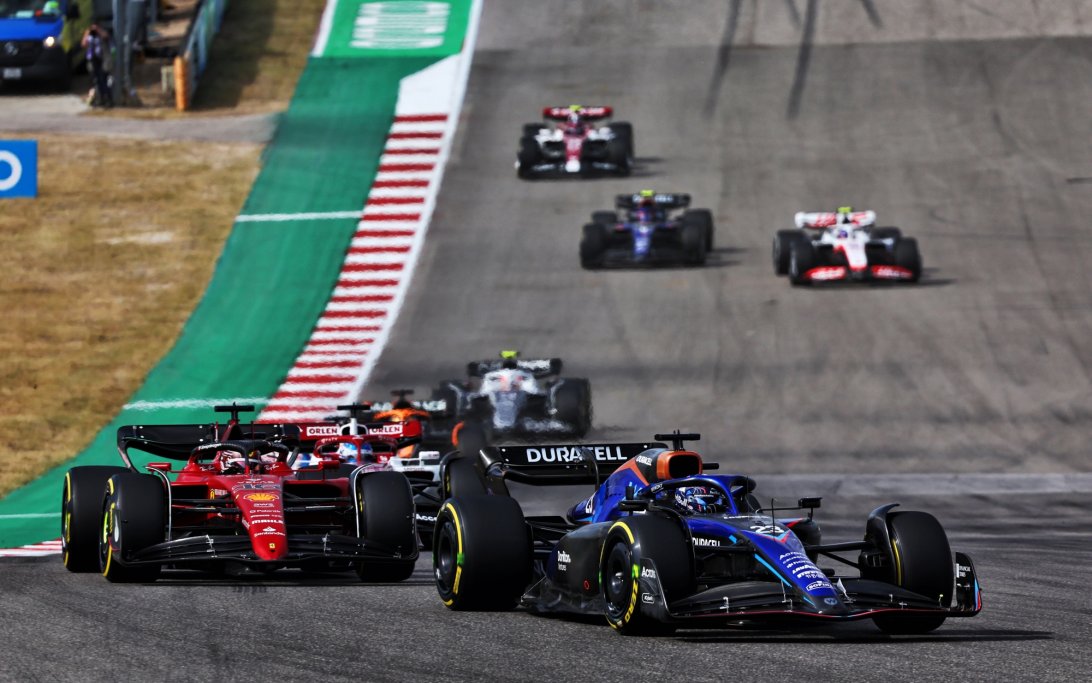
- Turn 12 (Back Straight into Hairpin) -- This is arguably the prime overtaking spot on the circuit. COTA's back straight is long enough for cars to attain top speeds and get a strong tow. With DRS open, the chasing car can close rapidly and then pop out of the slipstream to attack under braking. Turn 12's sharp angle means a big braking deceleration, favoring brave overtakers. Many memorable passes have happened here, often before the cars even reach the apex. In 2023, for instance, fans witnessed on the order of 78 overtakes during the race -- a large number of those were set up into Turn 12, demonstrating how much action this corner produces. Often the battle doesn't end at Turn 12; two cars might go side-by-side through the following complex (Turns 13--15), so a failed pass attempt here can turn into an exciting multi-corner duel.
Outside of those, we occasionally see passes into Turn 11 (if a driver forces a mistake in the Esses before the hairpin) or even into the Turn 15 stadium section if two cars are swapping positions through Turn 12. But by and large, Turn 1 and Turn 12 are the overtaking hot spots at COTA. The circuit was designed with overtakes in mind, and it shows -- fans can expect plenty of side-by-side action and late-braking heroics during the 2025 US Grand Prix.

Tyre selection and strategy
Tyre strategy is always a talking point in Austin, thanks to COTA's combination of abrasive corners and variable October weather. Pirelli's tyre selection for the 2025 US GP (if following recent tradition) will likely be the middle range of compounds -- typically the P Zero C2 (hard), C3 (medium), and C4 (soft). This was the same range used in the past couple of years at Austin, providing a good balance for COTA's mix of high-speed and technical sections. Teams will have to carefully manage these tyres across the weekend, especially with the Sprint format (if a Sprint race is planned, as it was in 2023--24) limiting the tyre sets available.
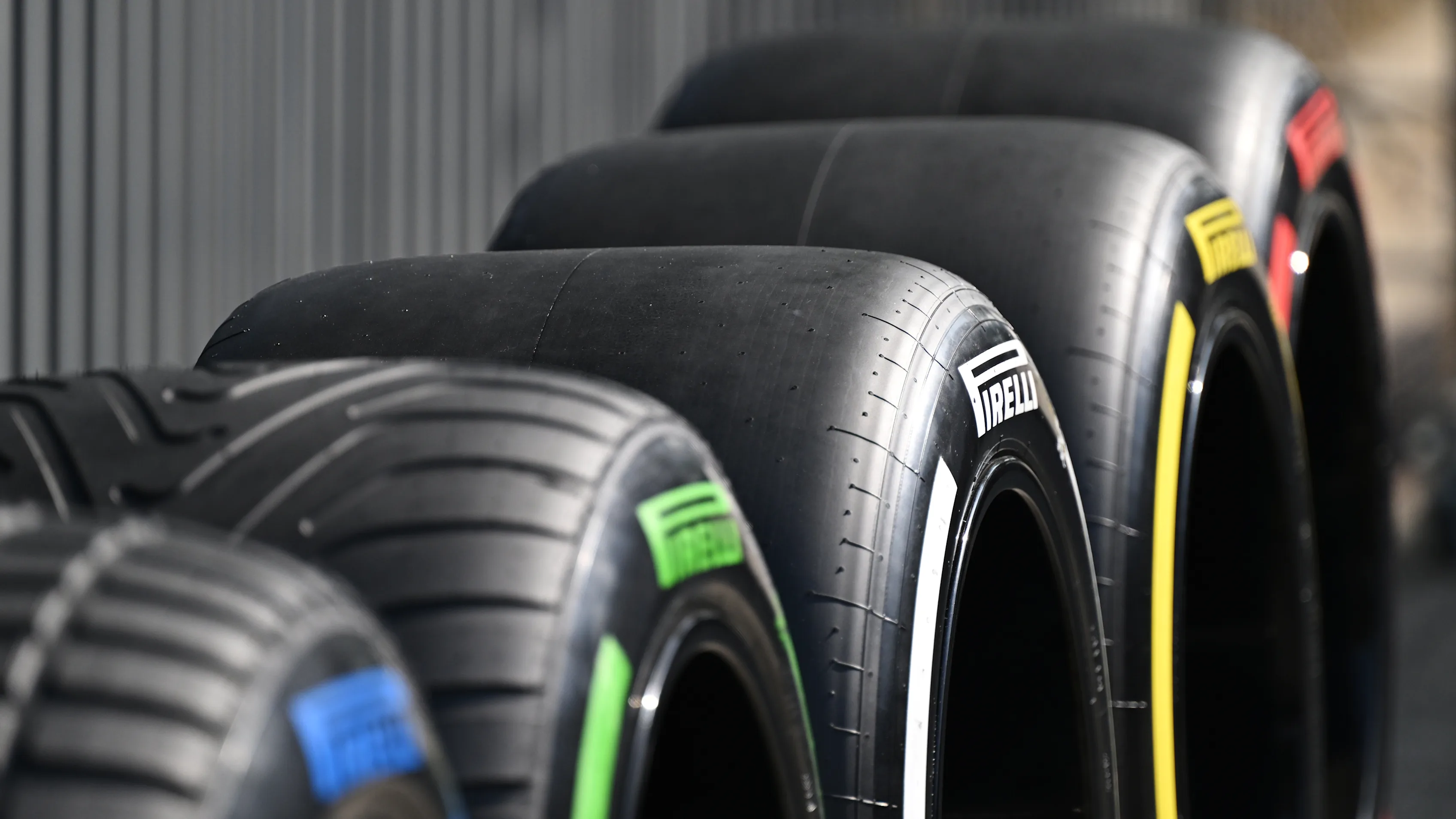
In terms of strategy, history shows that tyre degradation at COTA can be significant. The track puts fairly even stress on front and rear tyres, with a lot of lateral loads in the fast corners. Combined with Texas heat, this leads to thermal degradation being a key factor -- tyres can overheat and wear if pushed too hard for too long. Typically, we've seen that a two-stop strategy is the quickest approach on race day in Austin. Multiple pit stops allow drivers to push each stint relatively hard without the tyres falling off dramatically. A one-stop strategy is possible but usually right on the edge: it requires careful pace management to prevent the tyres from overheating or graining, which in turn means sacrificing some performance. In Pirelli's own words, "a one-stop involves a lot of careful degradation management, to the obvious detriment of performance".
In recent races at COTA, we've seen strategy variety. For example, in 2023 most drivers favored the medium compound (C3) as the workhorse tyre, finding it more effective than the hard (C2) over long runs. Soft tyres have typically been used sparingly -- perhaps in qualifying or a short final stint -- as they tend to degrade quickly under COTA's demands (in 2023's race, the soft was only used at the very end by a few drivers chasing fastest lap). If 2025 sees a newly resurfaced track or unusual conditions, the teams might have to adjust on the fly. But under normal circumstances, expect strategies to gravitate toward two pit stops, with teams balancing between the medium and hard compounds for the best race pace. Of course, a well-timed Safety Car or unexpected weather could throw those plans out the window, so teams will need to stay flexible.
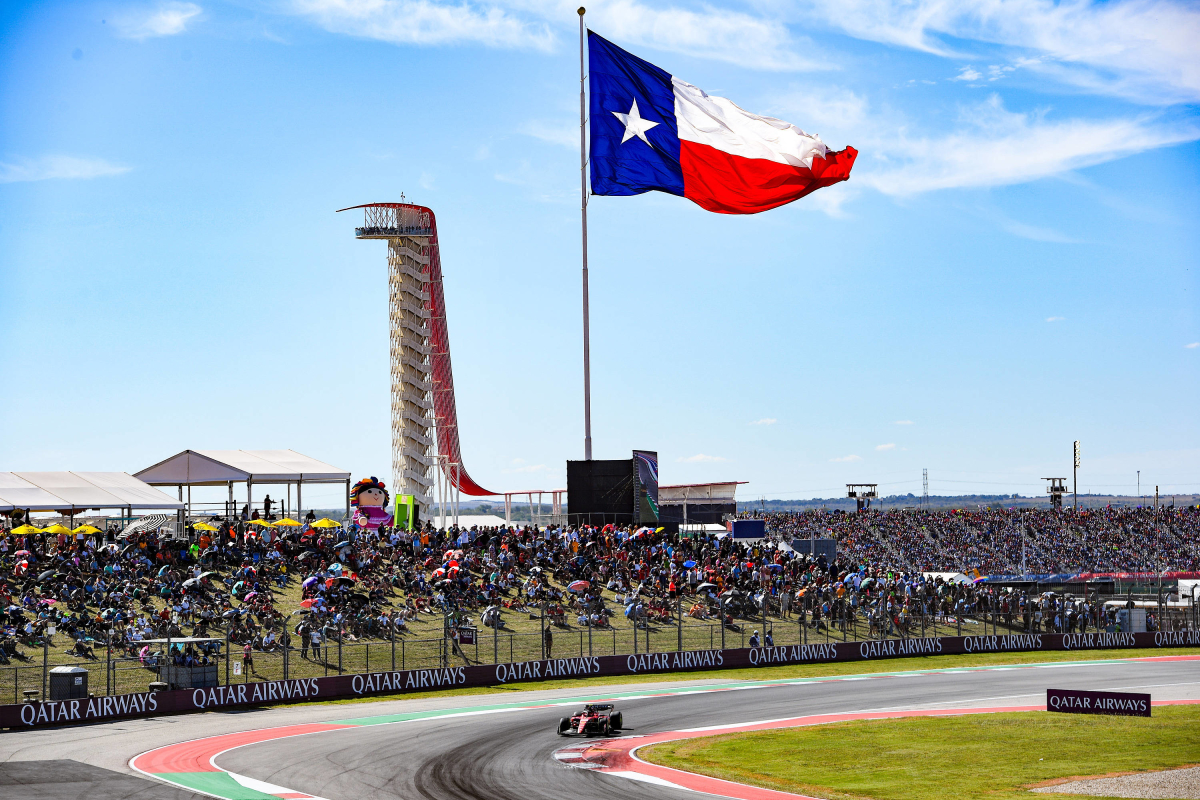
Weather outlook and impact
One wildcard in Austin is the October weather. The 2025 United States GP is slated for the autumn in Texas, which usually means warm days but also rapidly changeable conditions. Forecasts for race weekend (based on recent years) suggest generally dry, sunny weather with highs around 28--33°C (82--91°F) on race days. In 2024, for instance, teams enjoyed three dry days of running with daytime temps in the high 20s°C and only a minimal chance of rain. We can likely expect something similar in 2025 -- Austin's typical fall climate is hot afternoons, cooler mornings/evenings, and mostly clear skies.
That said, Texas weather can be fickle. Big temperature swings are not uncommon; Pirelli noted that in Austin, ambient temps "can fluctuate considerably from one day to the next" in October. A cold front or thunderstorm can roll in unexpectedly. Teams will monitor forecasts closely up to the last minute. Even a 5--10°C change in track temperature can impact tyre performance and strategy (warmer track = faster tyre degradation, whereas a cooler track may help tyres last but make warm-up tricky). Wind is another factor -- COTA's open terrain means gusty winds can affect car balance on the high-speed sections. Engineers often have to adjust aerodynamic setups if strong winds are predicted.

And of course, there's always the outside chance of rain. COTA is a "rain or shine" venue and F1 will race in the wet if safe. While most US GPs at Austin have been dry, we have a famous exception: 2015's deluge. That year, remnants of Hurricane Patricia brought torrential rain that wreaked havoc on the schedule -- practice and qualifying sessions were washed out or delayed, and fans were left drenched as storms swept through. (Qualifying was even postponed to Sunday morning due to the downpour.) Although 2015 was an extreme case, it proved COTA can be hit by heavy rain if the weather turns. Should we get any hint of rain in 2025, it will add a whole new dimension: teams will need a wet setup, Pirelli's intermediate and full-wet tyres might come into play, and strategy calls (like when to pit for wets or stick it out) could decide the race. Even a light sprinkle at COTA can make the first sector very slippery, so drivers and strategists must be alert.
In summary, the expected weather for the 2025 US Grand Prix is likely to be hot and predominantly dry -- typical Texas racing conditions that will test cooling systems and tyre management. However, everyone in the paddock will keep one eye on the skies. If strong winds or a surprise rain shower emerge, adaptability will be crucial. The teams that get on top of the track conditions fastest -- whether it's managing overheating tyres in the heat or finding grip in a sudden rain -- will have a significant advantage come race day.

Historical records and statistics
As we gear up for 2025, it's worth looking at some historical stats and records that underline Austin's place in F1 history:
-
Past Winners & Dominant Drivers: Since COTA's debut in 2012, Lewis Hamilton has been the most successful driver at this track. Hamilton has 5 victories at Austin (2012, 2014, 2015, 2016, 2017) and 6 United States GP wins overall (including one at Indianapolis), making him the king of the US GP in the modern era. Notably, Hamilton clinched the 2015 Drivers' Championship with a win in a wild, wet Austin race -- underlining how pivotal this event can be. In recent years, however, Max Verstappen has been the man to beat. Verstappen comes into 2025 on a streak of three consecutive Austin victories (he won the US GP in 2021, 2022, and 2023) , showcasing Red Bull's strength at this circuit. Other past COTA winners include Sebastian Vettel (2013), Kimi Räikkönen (who took a popular win for Ferrari in 2018) , and Valtteri Bottas (2019) -- indicating that multiple teams have tasted success here. It's a track that has seen eras of dominance (the Mercedes era, now Red Bull's turn) but can still spring surprises (like Raikkonen's 2018 upset).
-
Pole Positions: Qualifying at COTA can be just as exciting, with the uphill run to Turn 1 rewarding those who start up front. The all-time record for most USGP poles is shared by Michael Schumacher and Lewis Hamilton with 4 each -- Hamilton secured a number of those in Austin during Mercedes' peak. In the last few years we've seen a mix of pole-sitters: e.g. Ferrari took pole in 2022 and 2023 (Carlos Sainz and Charles Leclerc respectively), showing that a well-set-up car on a single lap can topple even the favorites. Starting on pole is helpful given the short 250 m sprint to Turn 1's braking point , but as Turn 1 is so wide and tricky, pole is not a guarantee of holding the lead through the first corner.
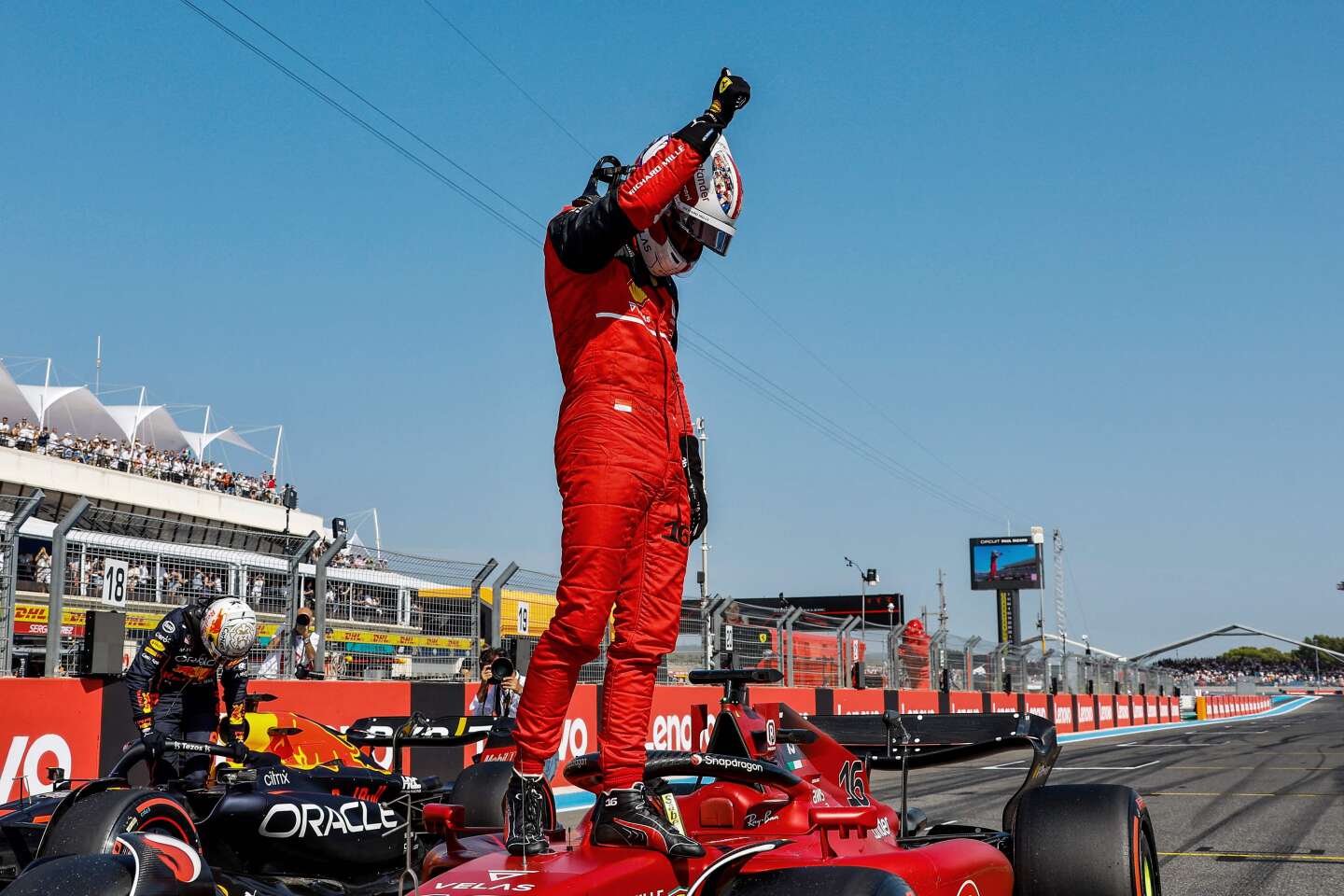
-
Lap Record: The official lap record at COTA (in an F1 race) is 1:36.169, set by Charles Leclerc in 2019 driving a Ferrari. That benchmark might be up for grabs in 2025 -- with each new generation of cars and if conditions are right, drivers often get close to record pace. Watch for the fastest lap late in the Grand Prix, especially if someone bolts on fresh soft tyres to chase the extra point.
-
Circuit Stats: Circuit of The Americas measures 5.513 km (3.426 miles) per lap and features 20 turns. It is one of a handful of anti-clockwise circuits on the F1 schedule, which places unusual stresses on drivers' necks (since most tracks run clockwise). The track's elevation change is notable -- 30.9 m from the lowest to highest point , most of that being the climb up to Turn 1. COTA is also known for its vibrant surroundings -- the iconic 251-foot observation tower and the Stars-and-Stripes painted run-off areas make it unmistakable.
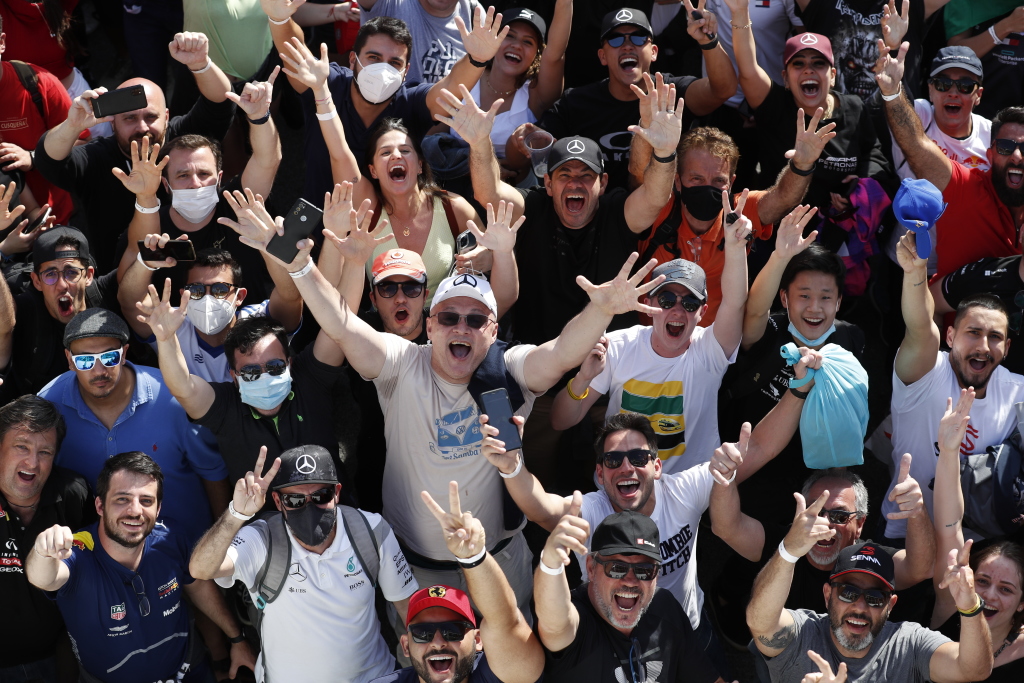
-
Attendance and F1 in America: Austin's F1 round has grown immensely in popularity. As mentioned, the 2022 US GP drew approximately 440k fans over three days, which was a record for F1 at the time. The surge in American interest (aided by Netflix's Drive to Survive and the addition of new US races in Miami and Las Vegas) means the United States GP is now a massive event. COTA's grandstands and general admission hillsides are typically packed, creating one of the season's best atmospheres. Expect the 2025 edition to continue that trend -- the energy from the crowd in Austin is often compared to classic F1 venues in Europe.
-
Safety Cars and Overtakes: Interestingly, despite the on-track battles, full Safety Cars are relatively infrequent at COTA -- historical data put the Safety Car probability around only ~14%. Virtual Safety Cars (VSCs) have been more common (~43% chance) , possibly due to incidents where a quick cleanup is needed without a full caution. This could influence strategies (teams know a Safety Car is not guaranteed to bail them out). As for racing action, we've seen healthy overtaking numbers -- as mentioned, 78 passes in the 2023 race -- confirming that Austin usually delivers excitement on Sundays.

All these stats set the stage for 2025. Will Hamilton add to his legacy or can Verstappen extend his Austin winning streak to four? Or perhaps a new name joins the COTA winners' list? Records are made to be broken -- and the US Grand Prix often finds a way to produce memorable moments and stats for the history books.
Conclusion
With the track and background covered, all eyes turn to the 2025 United States Grand Prix and what it might bring. This race comes at a critical juncture of the season -- as one of the final rounds, the results in Austin could have major title implications. In past years we've seen championships clinched at COTA (Hamilton famously secured the crown in 2015 with an Austin win , and again in 2019 with a strong finish), so the Texas round often carries extra weight. For 2025, teams and drivers will be keenly aware of what's at stake. Every point is vital in a tight championship battle, and the unpredictable nature of the Austin race means anything can happen.
Fans should look forward to a few key narratives: Will the dominant force of the season maintain their edge at COTA, or will a challenger use this race to turn the tide? Strategy will be a major storyline -- the mix of tyre tactics and potential weather twists could open the door for underdogs to shine. Keep an eye on how the frontrunners manage their tyres in the Texas heat, and whether any bold strategy calls (like an aggressive undercut or a brave one-stop attempt) might pay off. Additionally, the wheel-to-wheel battles we're likely to see through Turn 1 and into the Turn 12 braking zone could produce defining moments -- perhaps a late-race overtake for the win or a clash between title rivals fighting for every inch of tarmac.
Off the track, the Austin vibe will make the 2025 US GP weekend special. The circuit organizers always put on a show -- from the post-race concert to the track invasion tradition where fans in Stetsons flood the main straight to celebrate. There's a genuine buzz around F1 in the United States now, and Austin has been at the heart of that boom. So, whether you're a die-hard F1 fan or new to the sport, the F1 Austin 2025 weekend will be one to savor. Expect a blend of American showmanship and pure racing excitement. In summary, the 2025 United States Grand Prix at COTA has all the ingredients for a spectacular event -- a challenging track, strategic intrigue, passionate fans, and high stakes in the championship. Get ready, because Formula 1 in Austin always delivers -- and this year, it could be the race that everyone talks about on the road to the season finale. Enjoy the show!
